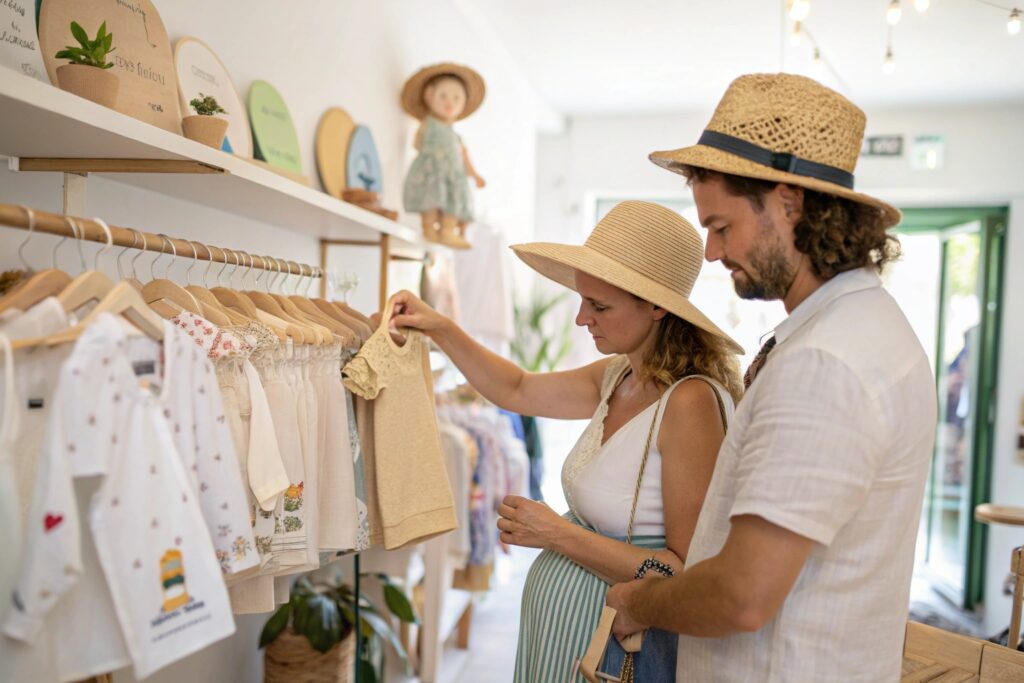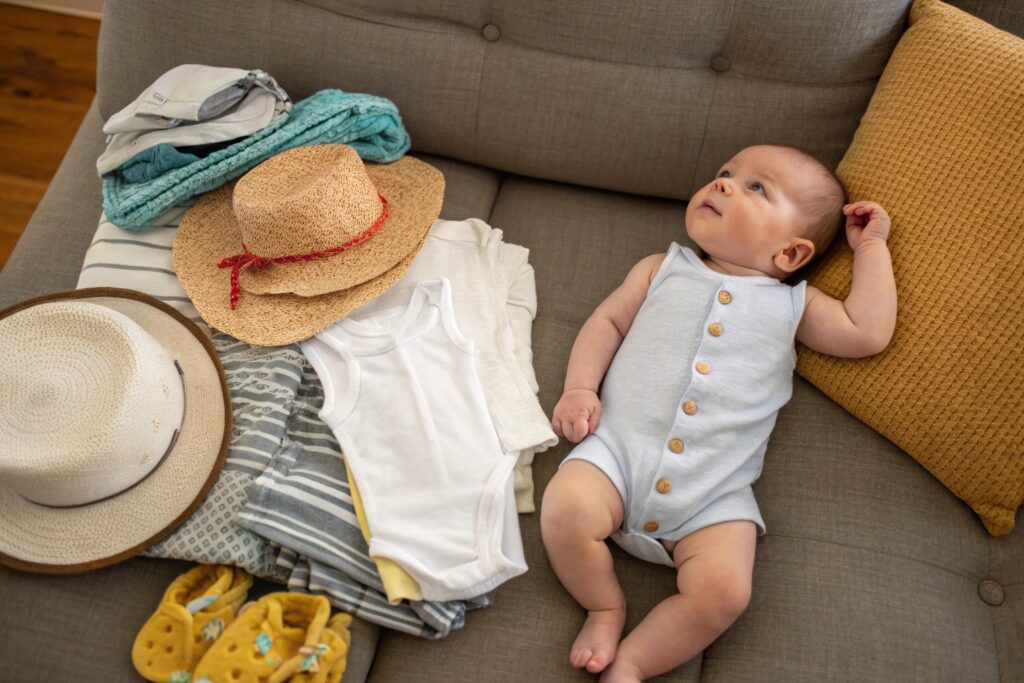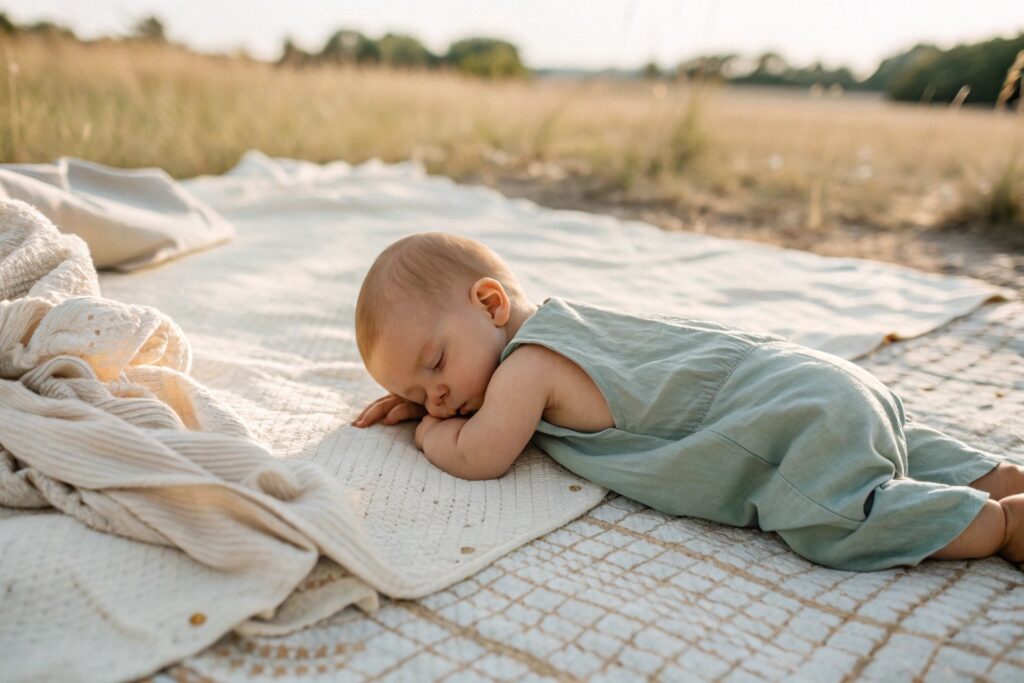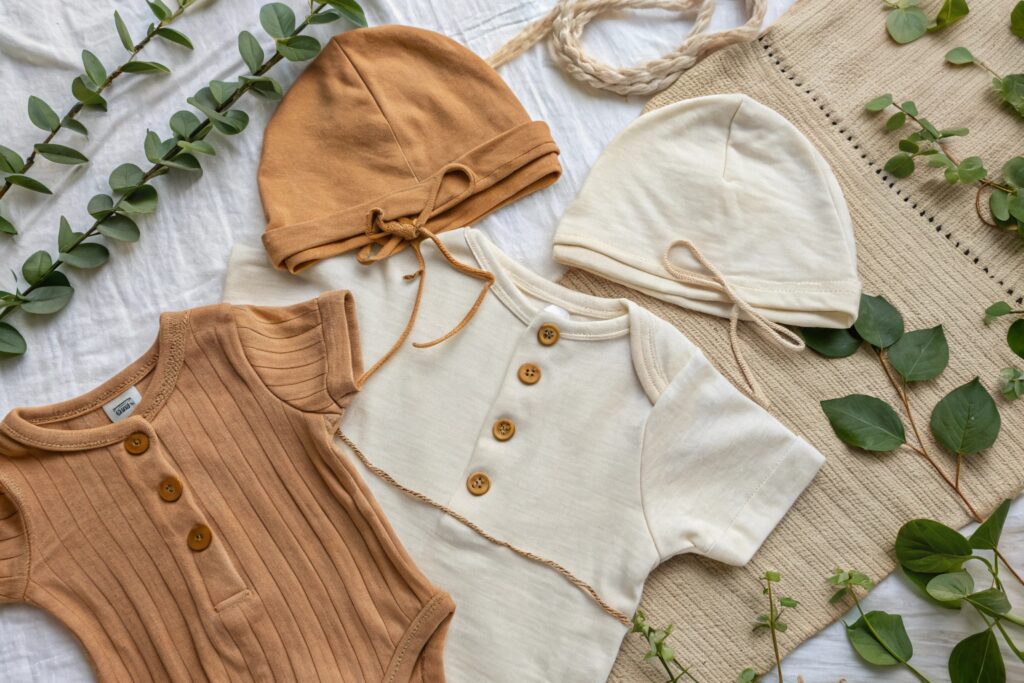Fashion once dictated everything—even for newborns. But today’s babies are no longer trapped in the whims of seasonal trends.
Today’s children are not victims of fashion because modern babywear is driven by comfort, safety, functionality, and sustainability—rather than runway aesthetics.
I’ve been in the apparel industry for over 15 years. And I’ve seen firsthand how baby clothing has shifted from fashion statements to practical essentials.
What influences modern baby clothing preferences today?
For decades, babywear mimicked adult fashion—tiny denim jackets, glitter prints, stiff collars. That has changed. Now, function speaks louder than form.
Modern baby clothing is influenced more by parental values, lifestyle needs, and safety certifications than by seasonal trends or designer labels.

How are lifestyle-driven values shaping the materials and colors used in babywear today?
Today’s parents—especially millennial and Gen Z—value practicality, eco-awareness, and wellness. That means soft, breathable fabrics like organic cotton and bamboo dominate. Loud colors and synthetic embellishments have given way to neutrals, earth tones, and gender-neutral palettes. When we develop new product lines at Fumao Clothing, we notice that clients rarely ask for logos or graphics anymore—they want clean silhouettes and fabrics certified by OEKO-TEX or GOTS. Fashion is no longer the driver. Parenting values are.
How do social media and online communities affect what parents expect in baby apparel?
Parents today rely heavily on digital communities—Facebook groups, TikTok reviews, Instagram reels—for recommendations. It’s less about “what’s trending” and more about “what works.” Influencers who post about diaper blowout-proof onesies or zippered pajamas drive more interest than stylists or celebrity lines. At Fumao, we often customize newborn garments for DTC brands built entirely on social proof. The designs are simple, but the messaging is smart—functional, minimal, trustworthy. This is the new influence engine.
How do parents choose newborn outfits over trends?
Gone are the days of miniature runway outfits for babies. Today’s shoppers want pieces that make their lives easier.
Parents choose baby clothing based on practicality, ease of wear, and sensory comfort—not aesthetics or seasonal fashion cycles.

What role does functionality play in the buying decision for new parents?
When you’ve got a fussy newborn, every second matters. Parents choose outfits with easy zippers, envelope necks, and elastic waistbands. Buttons? Lace? Tulle? These are immediate red flags. I’ve worked with dozens of brand founders who built their entire babywear lines around one idea: effortless diaper changes. In fact, one of our U.S. clients had us redesign an entire layette line just to replace buttons with two-way zippers. They didn’t care about Pantone swatches or prints. They wanted speed and simplicity.
Why do parents care more about sensory comfort than stylish designs?
Babies have ultra-sensitive skin. Parents know that any harsh seam or synthetic fiber could cause rashes or discomfort. That’s why brushed cotton, seamless finishes, and tagless labels are now standard in high-quality babywear. Fumao’s baby collections emphasize touch—clients run their hands over our swatches before placing orders. They ask more about GSM weight than about sleeve styles. The trend isn’t visual anymore—it’s tactile.
Why is comfort prioritized in baby fashion now?
Today’s consumers are more informed than ever. And they won’t compromise on comfort just to follow fleeting style trends.
Comfort is the top priority in baby fashion because it aligns with health, developmental needs, and practical caregiving.

How does clothing impact a baby’s sleep, movement, and mood?
Tight waistbands, rough seams, or rigid fabrics can interfere with a baby’s natural movements, feeding habits, and even sleep quality. Soft, breathable fabrics help regulate body temperature and promote relaxation. Some of our most reordered SKUs at Fumao Clothing are made from 95% cotton and 5% spandex—for that tiny bit of stretch that makes all the difference. American buyers we work with often run comfort tests with parents before placing their bulk orders. Because comfort sells.
What features do brands now request to ensure ultimate wearability for babies?
Design elements like fold-over mittens, footed pants, elastic necklines, and flat seams are now non-negotiables. Our factory has specialized lines that produce babywear with ultrasonic seam bonding—no stitches at all—for high-end clients. And breathable weaves like waffle knit are increasingly popular in warm-weather lines. These aren’t aesthetic choices—they’re functional. Buyers who used to focus on pattern variety now prioritize fabric properties and comfort engineering.
Is sustainable babywear replacing fast fashion?
Fast fashion still exists, but even budget brands are leaning green. The babywear segment leads this shift in surprising ways.
Yes—sustainable babywear is increasingly replacing fast fashion as parents and brands prioritize environmental responsibility and long-term value.

What are the main materials being used in sustainable babywear today and why are they favored?
Materials like organic cotton, bamboo viscose, and Tencel are popular because they’re gentle on skin and eco-friendly. They’re grown with fewer pesticides, require less water, and break down naturally. At Fumao, over 40% of our babywear orders now use GOTS-certified fabrics. Clients often ask for third-party testing certificates and ask to audit our dyeing partners. Sustainability has become a core differentiator for many brands, not just a marketing checkbox.
How do resale platforms and capsule wardrobes affect babywear design and sourcing?
Parents now plan smarter. Instead of 20 trendy outfits, they buy 7-8 mix-and-match essentials that last longer and hold resale value. Platforms like ThredUp, Retykle, and even Instagram resale accounts are booming. That means clothes need to hold up—not just look good for one photo. As manufacturers, we’ve had to elevate our construction standards and advise our B2B clients on packaging that supports resellability. We’ve even developed hangtags that double as resale condition checklists.
Conclusion
Today’s babies wear what works—not what wows. Fashion has taken a back seat to function, comfort, and sustainability. And that’s a win for everyone.










